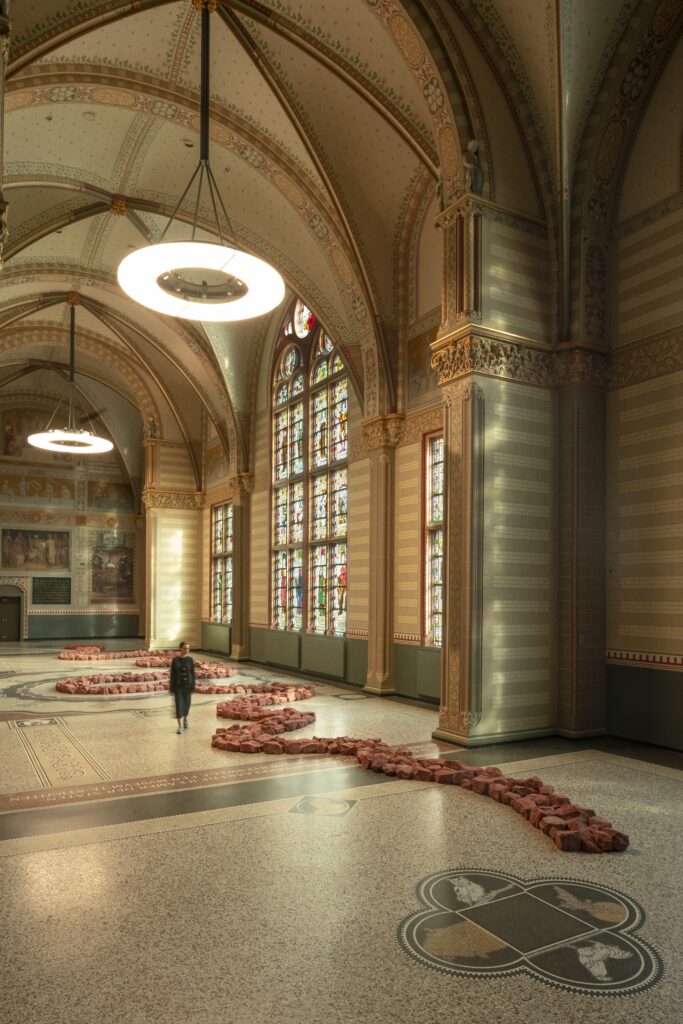Museum institutions face the ongoing challenge of balancing energy savings and lighting quality. Striking the right balance is crucial, as prioritizing energy efficiency often leads to the lighting quality being compromised. How can sustainability be incorporated into lighting design for museum environments without compromising the preservation of artifacts and design qualities? This article will address three main aspects that play a key role when considering sustainability in museum environments: art preservation, circular manufacturing and the role of daylight.
Smart lighting solutions for energy efficiency and art preservation
Museums consume a considerable amount of energy to maintain their collections. Lighting contributes significantly to the energy consumption in both exhibition and back-of-house areas while it plays an important role in displaying and preserving artworks. The lighting scheme can be thoughtfully designed to provide illumination only where needed.
By incorporating in the design control systems and sensors, the lighting can be adjusted based on factors like occupancy and natural light, ensuring energy efficiency and conservation. Providing guidance for the museum’s teams and staff on how to properly use and maintain the lighting system can be beneficial for optimal performance and energy savings.
Sustainable lighting: harnessing the circular economy
The choice of lighting products plays a pivotal role in addressing sustainability. Instead of opting for products that follow the traditional linear manufacturing model of “take, make, waste” a circular approach to manufacturing offers an alternative way that maximizes the value of resources by prolonging their usage. This involves strategies like repair, repurposing, upgrading, and other practices that extend the product’s life cycle.
When assessing the environmental impact of luminaires, there are two key aspects to consider. Firstly, it is crucial to understand the initial embodied carbon of a product by minimizing greenhouse gas emissions associated with raw material extraction and transportation. Sourcing locally produced components and opting for shipping transportation rather than air transport can significantly reduce the carbon footprint.
Once the luminaire is manufactured it is important to preserve its embodied energy by ensuring its long-term utility. A lighting fixture created through circular manufacturing principles should offer flexibility and durability through repair and upgrade services, including:
- Ability to upgrade specifications by adjusting beam angles and light quality.
- Variable lighting control options.
- Interchangeability of components, accessories and mounting methods.
- Recovery and regeneration of components and materials at the end of the product’s life, completing the circular cycle.

Museum lighting redefined: the daylight approach
Harnessing daylight in museums offers energy-efficient and sustainable lighting. However, uncontrolled daylight presents challenges, such as overheating and excessive illumination that can harm the artwork’s preservation. Some museums restrict daylight in galleries due to difficulties in managing it within conservation limits, altering the original architectural design.
This can be addressed by reevaluating daylight systems and reintroducing windows and skylights. To effectively utilize daylight, it’s important to involve daylight consultants and engineers in the design process. A practical utilized device for controlling daylight’s heat and UV variations are UV conservation films.
They reduce winter heat loss, UV penetration and minimize glare, improving the lighting, energy efficiency and architectural integrity. To reject solar gain and enhance heat retention it is advised specifying heat-rejecting glazing, blinds and/or shading systems that can diffuse light and block direct sunlight. Additionally daylight benefits museum staff, enhancing their well-being and productivity, while providing visitors with a visual connection to the outside, enriching their experience.

Conclusion
By incorporating sustainable lighting design in museums, substantial energy savings can be achieved. Upgrading lighting systems with modern technologies, optimizing daylight usage, implementing lighting controls, and considering the product’s life cycle can significantly reduce energy consumption and maintenance expenses. This not only benefits the environment but also promotes sustainability within the institution’s operations.






